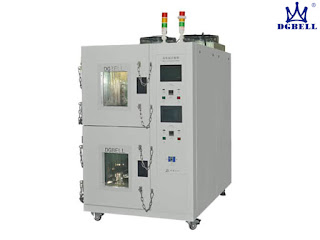The high and low temperature test chamber is an essential machine for several industries. But it has its limitations.
The high and low temperature test chamber is an important tool for several businesses. On the contrary, there are a few drawbacks to by using this equipment. The benefits of high and low temperature test chambers are clear.
By understanding the limitations and future prospects of high and low temperature test chambers, you may make more informed decisions about whether to use them in your business.
Thankfully, you will find approaches to work around these limitations and take advantage of one’s high and low temperature test chamber.Temperature Test Chamber By understanding the potential problems, you may face and taking steps to stop them, you will get the most from your investment in this equipment.

High and Low Temperature Test Chamber Limitations of Refrigerant System
A higher or low temperature test chamber is just a device used to check the performance of materials and products at extreme temperatures. The two most typical forms of chambers are thermal shock chambers and climate chambers. Thermal shock chambers are accustomed to simulate the rapid change in temperature that happens each time a product is moved in one environment to another. Climate chambers can be utilized to check products under a variety of different environmental conditions, including high and low temperatures, humidity, and wind…
You can find a number of limitations to using high and low temperature test chambers. One is the cost of running the chamber. Chambers require lots of power to maintain the desired temperature. So, this will significantly increase the cost of testing. Another limitation is how big the chamber. Chambers can be extremely large, which can make it difficult to check smaller products. Additionally, the temperature in the chamber can differ significantly in one area to a different, which can affect the outcomes of the test.
The limitation of low temperature chamber refrigerant thermal physical characteristics
Thermal physical properties are important considerations for both high and low temperature test chambers. The limitations of low temperature chamber refrigerant thermal physical characteristics are well known. However, the limit of pressure ratio of single-stage compressed vapor refrigeration cycles is not commonly understood.
The refrigerant found in these chambers must have a wide selection of thermal characteristics in order to maintain the desired temperature range. Additionally, the compressor coil must have the ability to dissipate a large amount of heat in order to keep carefully the chamber running efficiently.
Limit of pressure ratio of single-stage compressed vapor refrigeration cycle
The refrigerant must have a low boiling point in order to create a cold environment. However, you will find limitations to the pressure ratio of a single-stage compressed vapor refrigeration cycle. This means that the refrigerant can’t be compressed beyond a particular point or it will boil prematurely.
However, it is essential to take into account when designing a low temperature chamber. If the pressure ratio is too much, the refrigerant will boil prematurely and the chamber won’t have the ability to maintain the desired temperature.
Refrigerant
In general, refrigerants with a lowered boiling point are better suited for cold environments. However, you will find other factors to take into account as well. For example, the refrigerant must be safe to use and it must be able to work well with the compressor coil.
The limitation of heat dissipation of compressor coil
The compressor coil is accountable for dissipating a large amount of heat and if it’s not capable of doing so, the chamber won’t have the ability to maintain the desired temperature.
However, there’s prospect of future advancements that could overcome these limitations. For example, new refrigerants could become available which can be better suited for high or low temperature environments.
Future Development Prospects of High and Low Temperature Test Chamber
The high and low temperature test chamber is just a device that’s used to check the performance of numerous objects and materials at different temperatures. This revolutionary product has many potential applications. Also, its popularity is increasing rapidly. In order to meet the requirements of customers, the manufacturers of this revolutionary product are constantly making improvements to it.
The compressor water cooling
The development prospects of high and low temperature test chambers are extremely optimistic. This is because the compressor water cooling system can effectively reduce the running noise of the test chamber.
High and low temperature test chamber must also regularly clean the evaporator
Additionally, regular cleaning of the evaporator is vital to maintain the accuracy of test results. Finally, we should observe that the high and low temperature test chamber is a critical tool for laboratory research and development. It plays an irreplaceable role in product quality control and R&D process. We ought to make full utilization of its potential and continue to boost its performance.
The price tag on high and low temperature chamber
The price tag on high and low temperature chambers is now more and more affordable. Some for the future development prospects of the high and low temperature test chamber include increased efficiency, reduced size, and lower costs. With increased efficiency, the device will be able to achieve better results in a shorter amount of time. Reduced size can make it easier for users to store and use the device. Lower costs can make it more affordable for customers.
Final Words
The high and low temperature test chamber offers many benefits to several industries. But additionally, there are some limitations that should be thought about when by using this technology. By understanding the potential drawbacks of these chambers, industries can use them more effectively within their work. Additionally, new technologies may soon overcome the existing limitations of these chambers.
